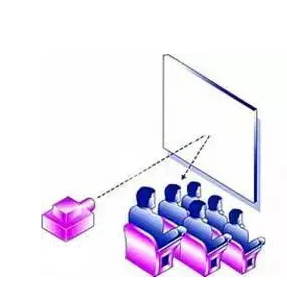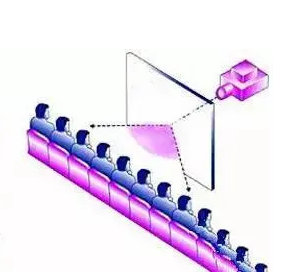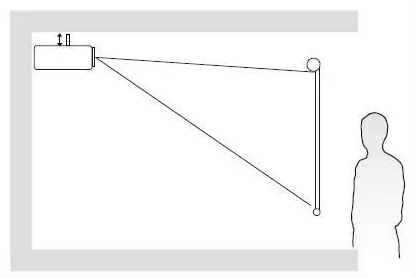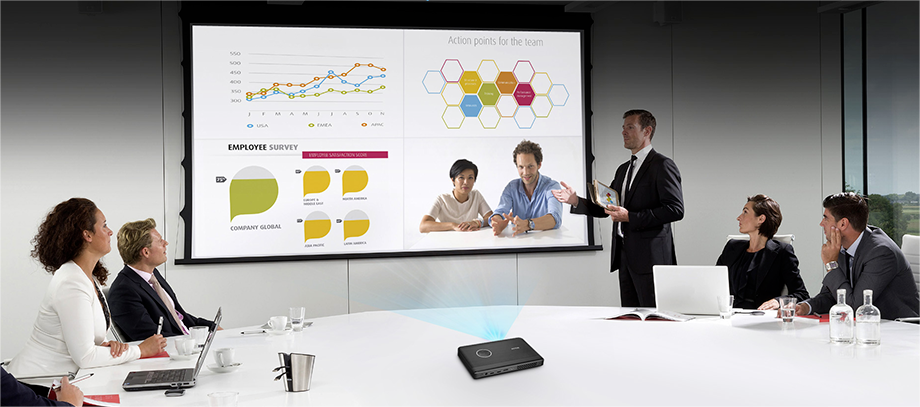- Select Language
The X501 Handheld PDA combines advanced barcode sc...
The U9000 handheld PDA combines advanced barcode s...
When we are selecting a projector, we will find that there is a "Projection method" function in its manual. So how many projection methods are there of the projector? What is the difference between front projection and rear projection? Should we buy a front projection projector or a rear projection projector?Let's find out through this article.
Generally, there are four projection methods, namely front projection, rear projection, ceiling mount projection and desktop projection. These four ways are intertwined, two of which are combined into a projection installation method. Among them, front projection and rear projection, ceiling mount and desktop, these two pairs correspond to each other. Simply put, if ceiling mount is chosen, the other projection mode for choice is front or rear projection, and vice versa.
1. Front projection
Front projection, is currently the most widely used and the projection method supported by the most projectors. When using front projection, the audience and the projector are on the same side as the projection screen. The advantage of using front projection is that it is very space-saving, and the requirements for the projection screen are relatively low. Of course, front projection is more affected by ambient light than rear projection.

2. Rear projection
Rear projection refers to the separation of the audience and the projector on both sides of the projection screen. The advantage of rear projection is that the projector is relatively less affected by ambient light, which avoiding blurring caused by reflections from the projection screen. However, compared to front projection, rear projection requires more space and may require twice the depth distance than front projection.

3. Ceiling mount projection
Ceiling mount projection is also a projection method most often used by modern users. The projector is fixed and suspended from the ceiling with screws and bolts by arranging a ceiling mount bracket dedicated to the projector. The advantage is that there is no need to consider the weight of the projector. At the same time, the method of ceiling-mounted projection completely fixes the position of the projector, so there is no need to worry about the offset of the projector lens. Of course, relatively speaking, ceiling-mounted projectors are more troublesome when it comes to daily dust and other cleaning.

4. Desktop projection
Desktop projection is to place the projector on a level surface in the room. The biggest difference between it and ceiling mount projection is that it does not need to be fixed in one position. The advantage of this is that the projector can be moved at any time and any place you want. Of course, inconstancy and constant movement would cause the projector's filament to vibrate, greatly reducing the life of the projector's bulb.

Hotus DLP projector support four different projection mode, welcome to request more products details if you have any interest.